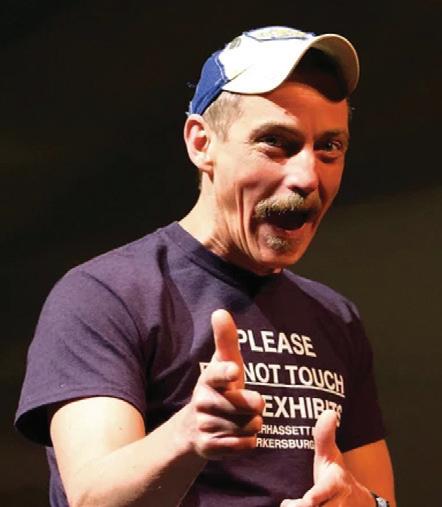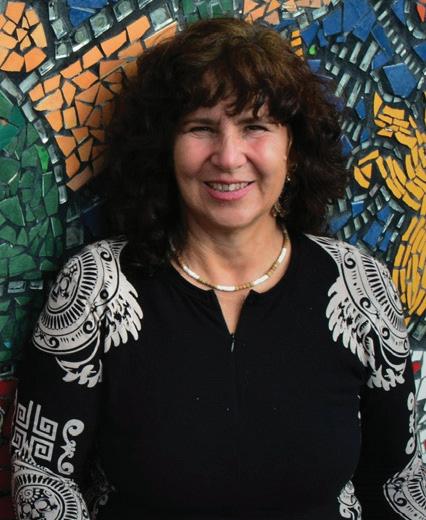


















What magnitude was the earthquake that rocked Turkey and Syria this past weekend?
A. 9.9
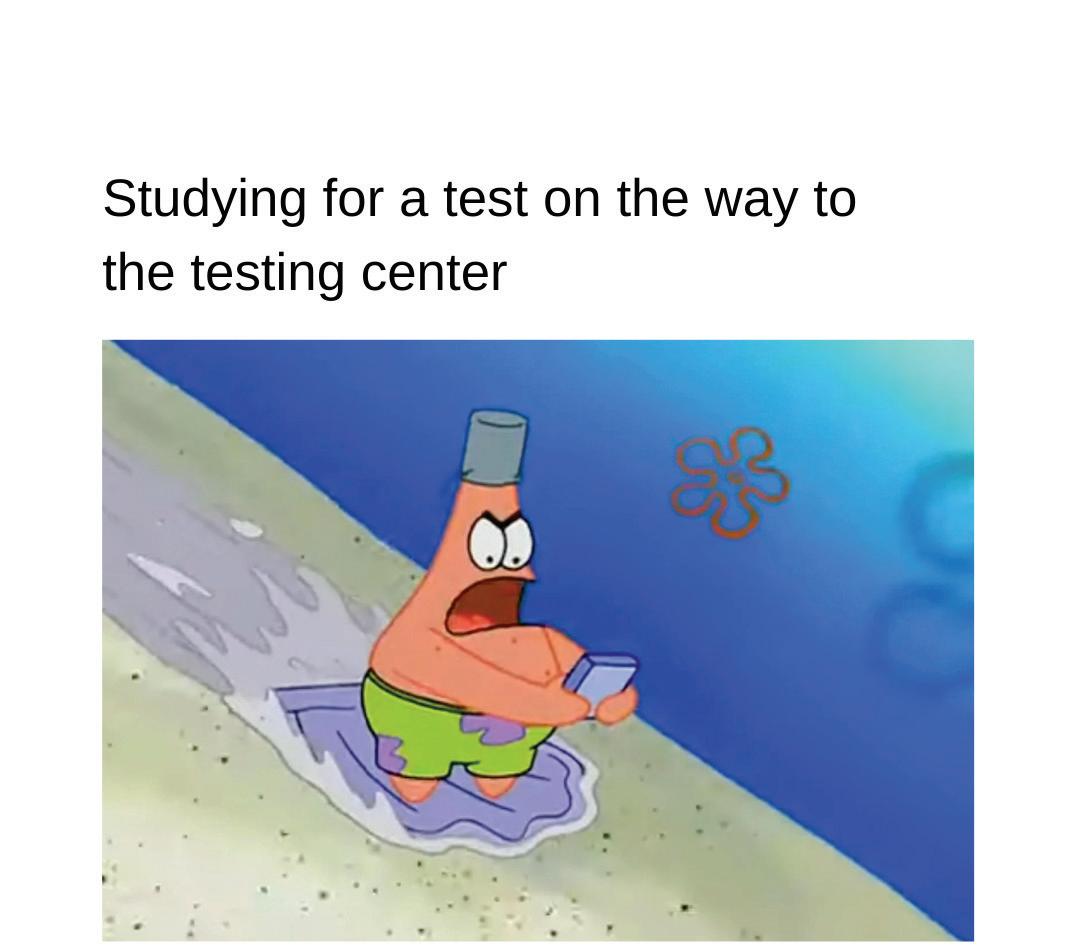
B. 5.6
C. 7.8
D. 3.2

Beyoncé is now the musical artist with the most Grammys to her name. How many Grammys has she won?
A. 62
B. 32
C. 42
D. 12
The U.S. military shot down an alleged spy balloon from a foreign country this past weekend. From what country did this spy balloon originate?
A. South Korea
B. Japan
C. China
D. Thailand
What renowned football player announced his retirement this past week?
A. Tom Brady
B. Aaron Rodgers
C. Jalen Hurts
D. Patrick Mahomes

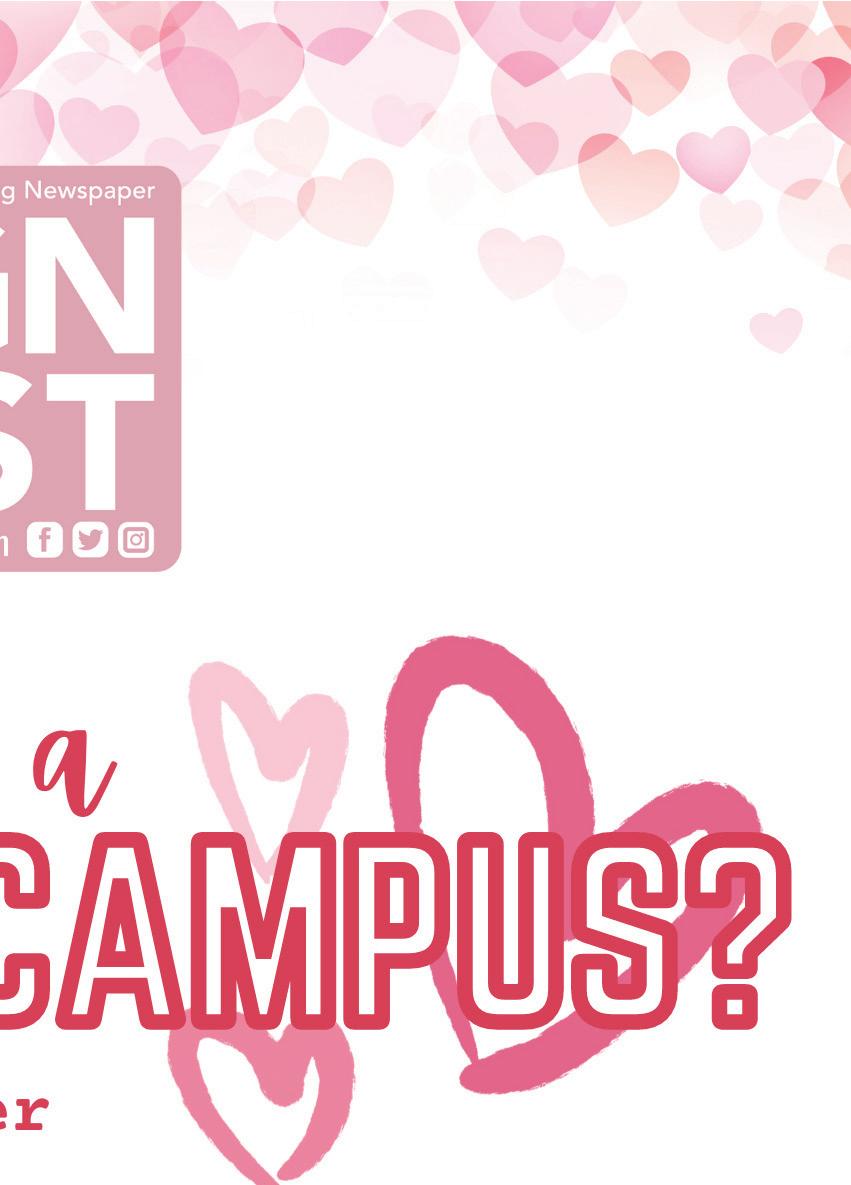

 By BRISA ODENTHAL Reporter
By BRISA ODENTHAL Reporter
WSU’s Department of Energy and Sustainability has been working hard to offset carbon production from the university. The campus, which is already 18.7% powered using renewable energy from Rocky Mountain Power, has added solar panels around campus, a fully electric bus system and plans to involve sustainability in their upcoming construction projects.
“The biggest one right now is the Dee Events Center that is in early design, and my goal for that is for it to be carbon-neutral by the time we’re done,” Justin Owen, energy manager at WSU, said. “The other big one that is just getting going is the [McKay] education building, which will get a serious
overhaul.”
Through these changes, buying carbon offsets and more efforts in the near future, WSU is on track to reach their goal of becoming 100% carbon neutral by 2040.
“The next project planned is putting in a solar covered parking structure over the pay lot,” Jennifer Bodine, sustainability manager in the Energy and Sustainability Office, said. “At the Davis Campus, we will just add solar as we need it to the existing solar field that is out there. Also, a good portion of WSU’s renewable energy will come from wind or solar that is located off site.”
WSU has made smaller switches in order to further their sustainability goals. The campus has switched to LED lightbulbs and electrified heating and cooling systems, and many of the exercise machines in the Strom-
berg Complex generate electricity when used.
“We have a comprehensive sustainability plan to ensure that we reach a number of other sustainability goals around water, food, air quality, waste, purchasing, academics and engagement,” Bodine said.
Completed projects around Weber have also worked to make WSU a more sustainable campus.

“The new Noorda Engineering Building uses like 70% less energy than Tech Ed. did, but even though it’s bigger, we are electrifying the campus; we’re getting rid of natural gas consumption, and instead of using large mechanical equipment like chillers or boilers, we’re putting in ground-source fuels and getting heat from the Earth to heat and cool our buildings,” Owen said.
The Department of Energy and Sustainability wants students and the community to be involved in creating a greener campus, for both current and future WSU students. The Department of Energy and Sustainability has released a Sustainability Plan and Climate Action Plan, both available on their WSU webpage.
“It’s something that I hope the campus is proud of and something that I hope our students can learn about while they’re here and take with them in their careers, regardless of where you might end up,” Owen said.

Following the closure of the Center for Multicultural Excellence, planning and preparation for new cultural centers is in full swing. The new name for these cultural cen ters is the Center for Belonging and Cultural Engagements.

Even though these centers are aimed to ward helping students of color, some feel that with the changes, WSU is more focused on the future. Students are also concerned about how the groups will be collaborating with each other in the future.
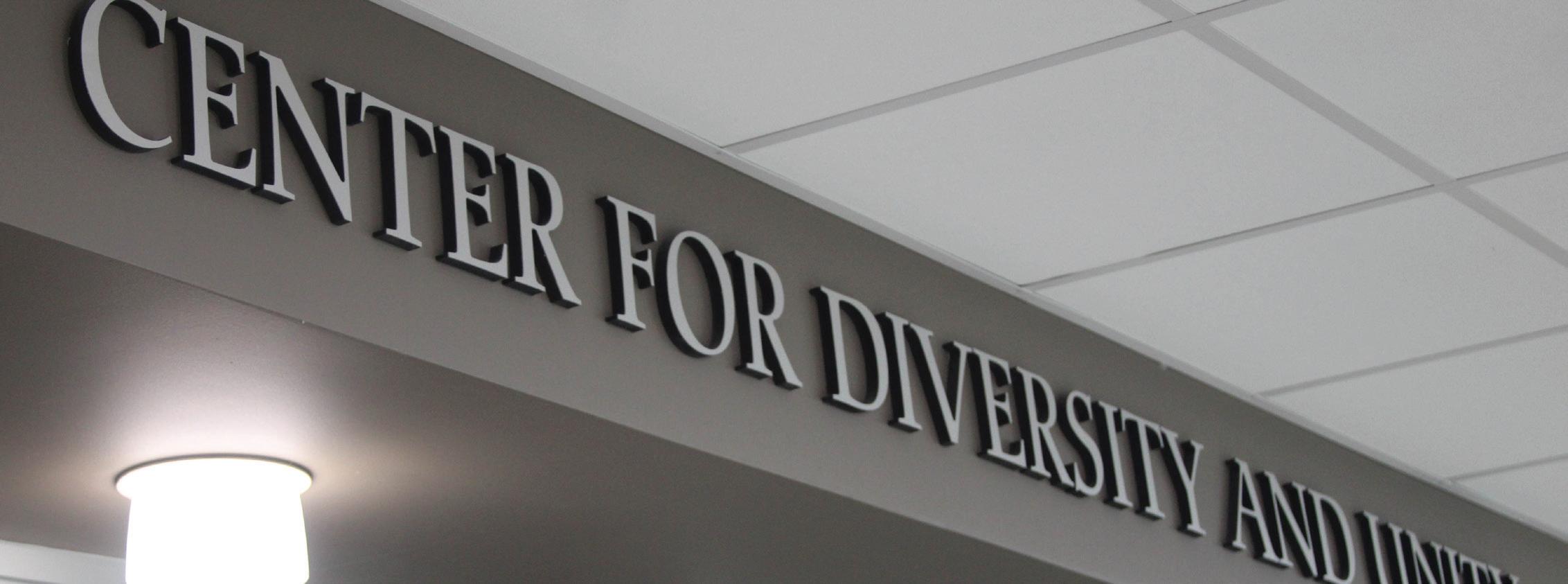
Maria Vazquez is one of those students. Vazquez was one of the students who used the Center for Multicultural Excellence regularly, but now she feels like the university has forgotten about her.
Vazquez said the CME space has been mostly empty of students, she thinks many of them think it’s closed. She doesn’t know where to go.
“And now I just feel a little disconnected from campus,” Vazquez said.
Genesis Vargas-Arrona, the undergraduate leader liaison for Hispanic initiatives, wondered what unity and collaboration will look like when they’re separated and in different locations.
Another concern is the budget and where the funding for these centers are going to be coming from. Vargas-Arrona said they were assured there would be a budget for the centers, and it wouldn’t change until the end of the semester.
“We’re noticing that’s the opposite,” Vargas-Arrona said. “There’s budget cuts.”
The university is saying there is money, but where that money is coming from is an unanswered question.
“They keep telling us that there’s grants and there’s things that they can apply for, but it’s not guaranteed funding. It’s not like they have that money available,” Vargas-Arrona said.
Students who worked in the CME are being asked to work less, and students looking
for financial assistance from the centers are having a harder time.
Vazquez tried applying for a scholarship to help her buy an expensive book she needed this semester, but she didn’t receive one.
“There was no scholarships available, because there’s no funds in the center,” Vazquez said. “So where is this money for the new center going to come from? They can’t even help me with maybe half or help me find a useful book or something to that effect. How are they going to have money to provide a new center for, maybe not me, but for future students?”
Joshua Wooton, the undergraduate liaison team lead, was told that the centers are going to rely on funding from donors until
the federal fundings rolls out in the next academic year.
Another concern students have is there’s still a lack of clear communication. Nobody really knows what is going on.
Wooton said that when talking about where the centers are going, the funding problem or any other questions he receives vague answers back, or answers like “We’ll talk about that tomorrow.”
Even the leaders and counselors don’t know how to answer some of the questions the students have because they haven’t been told the answers.
Vargas-Arrona said the leaders the administration pushed to the front to run the centers, don’t have the answers either. They try
to answer as best they can, piecing together what little information they have.
“Because even if you talk to some of the counselors, some of them don’t even know how to help us. It’s not that they don’t want to, it’s just everything is just up in the air,” Vazquez said.
Students think the CBCE has potential, but right now has flaws.
“I hope people know that there are safe places and there’s safe people on campus,” Vargas-Arrona said. “It’s important that students are aware of what’s happening and that they try to join the conversation as much as they can so that they’re advocated for as best as they can be.”
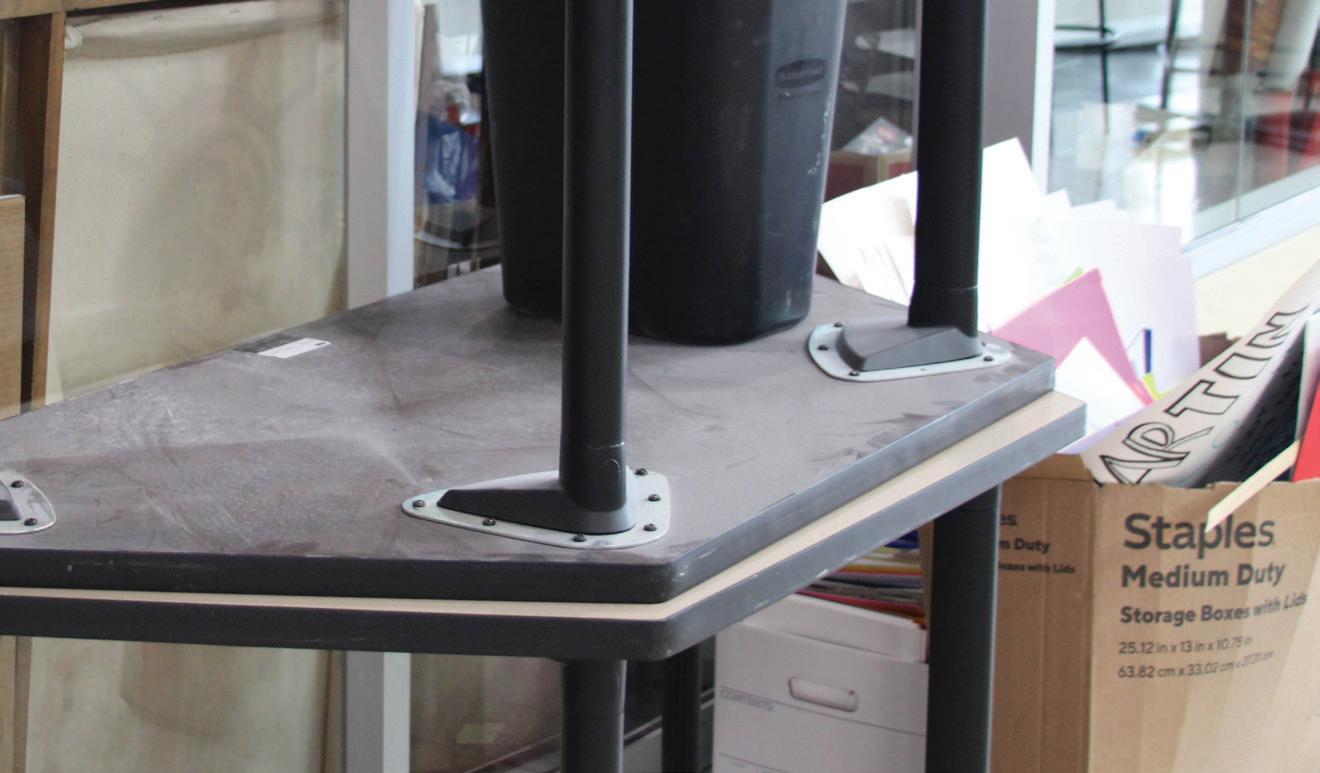 TOP: The new Center for Diversity and Unity that is under construction. BOTTOM LEFT: Furniture set aside waiting to be placed once construction is finished. BOTTOM RIGHT: Paint buckets inside of the Center for Diversity and Unity.
ANNA KUGLAR | The Signpost
ANNA KUGLAR |
The Signpost ANNA KUGLAR | The Signpost
By SHANIA EMMETT Reporter
TOP: The new Center for Diversity and Unity that is under construction. BOTTOM LEFT: Furniture set aside waiting to be placed once construction is finished. BOTTOM RIGHT: Paint buckets inside of the Center for Diversity and Unity.
ANNA KUGLAR | The Signpost
ANNA KUGLAR |
The Signpost ANNA KUGLAR | The Signpost
By SHANIA EMMETT Reporter


Weber State University students were lined up outside the Shepherd Union ballrooms, eager for a night of High Stakes Bingo on Feb. 1.
Prizes ranged from Minky Couture blankets, a record player, gift cards and a Hydro Flask water bottle. From the reactions of the students that night, High Stakes Bingo has become a very popular event.
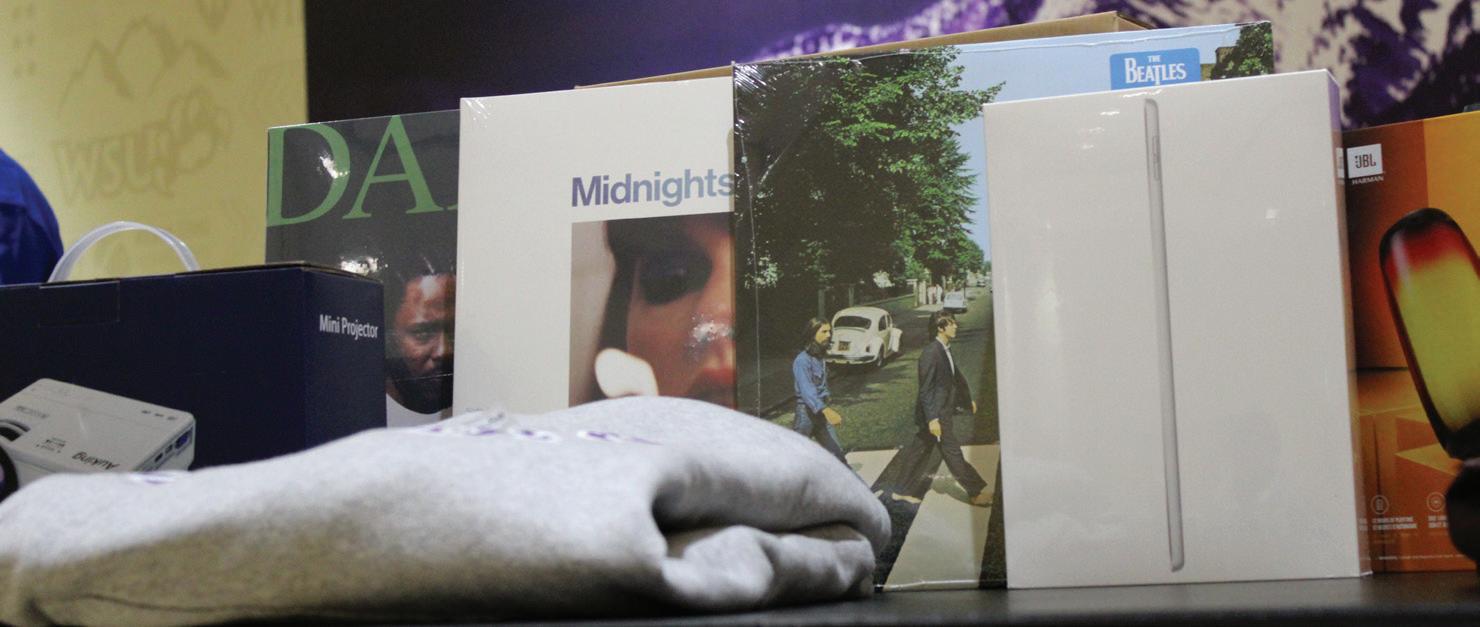

The WSU Student Association Activities Team is responsible for all of these events. Joy Imolega and Brenna Fritz, special events chairs, help run High Stakes Bingo along with Megan Wahlquist, the assistant to the activities vice president, and Dyson Bingham, entertainment chair.
“We were looking for a new event to start up, so we polled some data from a lot of students on what they would like to see and the most common response was bingo night,” Imolega said.









Both Fritz and Imolega said they had a lot of fun creating the event with their peers and were happy to
see that so many of the students were enjoying themselves. Imolega has helped the Activities Team run High Stakes Bingo night since it first started last fall semester.

“Since bingo is mainly thought of as something that you play in elementary school, we wanted to make it more fun. So we added really cool prizes, making it into High Stakes Bingo,” Fritz said.

The event was set up just like a classic bingo night. The Activities Team even brought in a classic bingo tumbler to draw the bingo balls from. As each number was called, Bingham would tell a funny joke or an interesting fact to go along with the call.
Many of the students said that it was fun coming to the bingo night because it was a great way to relax with their friends, get free stuff and just have an excuse to get out of the house.


Weber State University held its first Course Materials Affordability Fair on Feb. 1 from 9 a.m. to noon. The fair was meant to assist WSU students in lowering costs for course materials and finding alternate delivery formats. Experts from the Stewart Library, Wildcat Store, VitalSource and others were available to answer student questions at the fair.
Affordability Advocate Ashely Hilton said that some WSU students reported switching their majors due to the cost of textbooks.
“We have some faculty on campus who aren’t aware of what the retail cost of the book is when they select it, so they don’t know what students are actually going to have to pay at the time, and we’re trying to now share that information with faculty,” Hilton said. “They may have a textbook they really like to use, but we might be able to find it in an alternate format that is a little cheaper for students to purchase.”
Textbooks are available in a variety of forms today, including several ways that are free or low-cost for students. Diana Meiser, the Engineering and Applied Sciences Technology librarian, was at the fair informing faculty about Pressbooks. “[Pressbooks] is a resource available for faculty to publish book content,”
Meiser said. “So they can publish their own textbooks basically. And the nice thing is it’s free for students to read.”

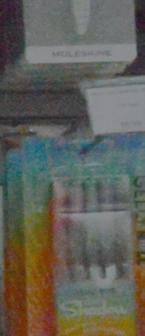

Besides boasting zero cost for students, Pressbooks includes other benefits to aid in academic success. Instructors can embed videos and quizzes with scores that directly transfer to Canvas, according to Meiser.




In addition to creating their own text from scratch, instructors can use and modify existing Open Education Resources for their courses.
“OER is a big initiative all across campus,” Misty Allen, resource sharing and course materials/reserves manager, said. “You know everyone is really excited about that.”
OERs are openly licensed and free to use while covering a wide range of materials and course levels. If a WSU faculty member is interested in learning more about the basics of OERs, they can sign up for a Bridge course that can be completed in 3-4 hours.

“We have a lot of people who look at using a chapter from this open-education resource … to make the one perfect textbook for that class,” Allen said. “There’s a lot of freedom like that.”
Allen was also promoting the Stewart Library’s Course Reserves Collection at the fair. The library has received a budget to buy textbooks off the adoption list for students to access.

The Course Reserves Collection in the library is helping that problem by giving students free access to textbooks.
“[We] try to buy textbooks at the beginning of the semester to help students who can’t afford to buy their text, or maybe can’t afford to buy their text this month, but maybe can next month,” Allen said.
According to Hilton, 80% of WSU students reported not having their course materials on the first day of class. By providing access to course texts early in the semester, students have more time to familiarize themselves with course materials.
“I think we have over 2,000 textbooks over at the library, from gen. ed. to master’s-levels courses,” Andrew Stapley, a course materials specialist, said. “You just have to go up to the service desk.”
The Stewart Library and Wildcat Store hope to hold additional Course Material Fairs in the future where they can continue to share resources to maintain and improve the affordability of Weber State for students.
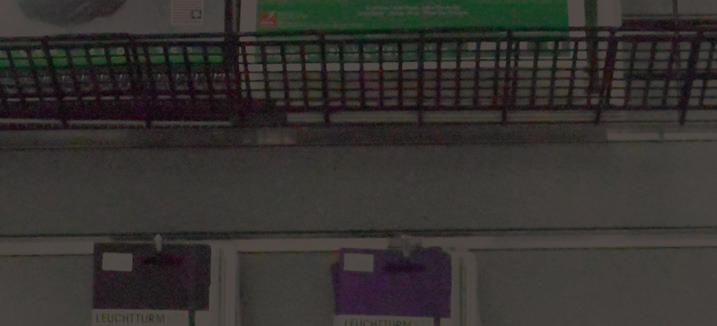
For more information about the Course Reserves Collection in the library, email ereserve@weber.edu. If faculty want more information on affordable options for course materials and texts, they should email affordability@weber. edu.
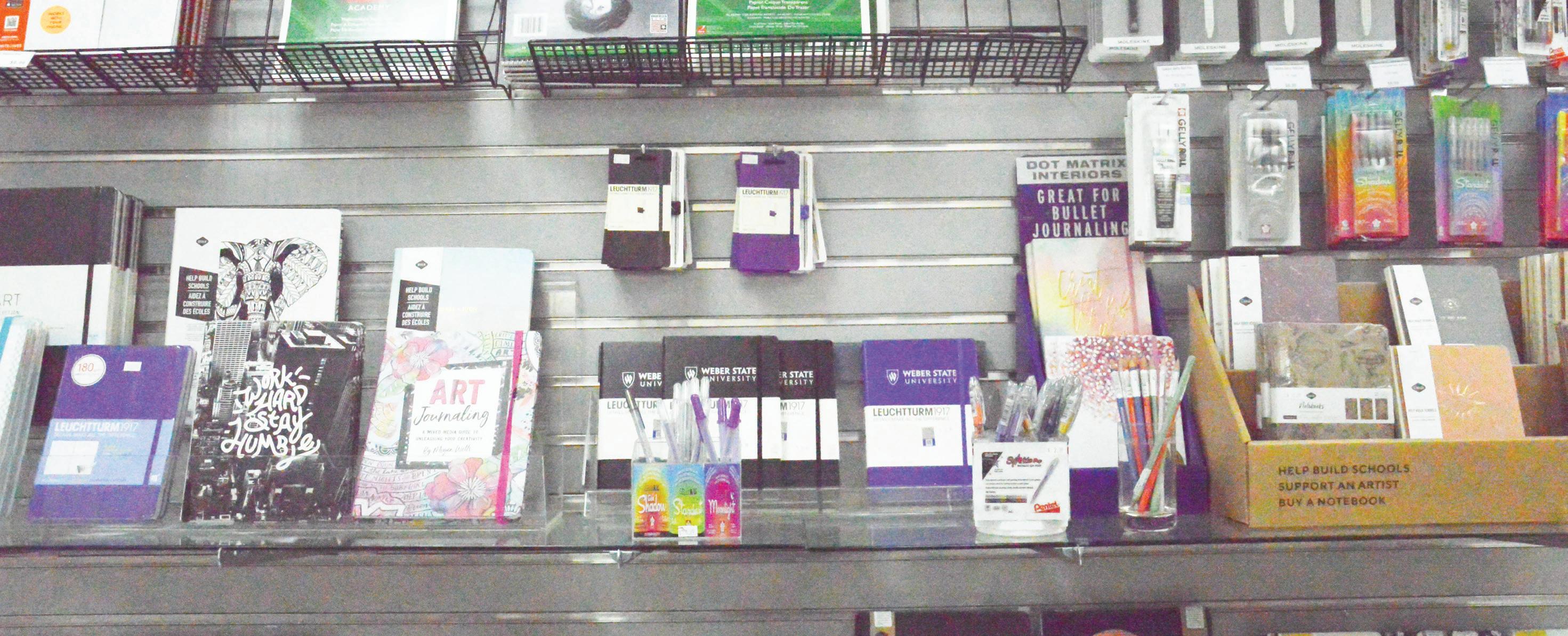
Feb. 1 marks the beginning of Black History Month, a time to add extra emphasis to the achievements and struggles of African Americans in U.S. history. Ogden’s history is filled with many influential Black figures — some whose names students might recognize but not fully know.
Five selected figures showcase great leadership, advocacy and perseverance, and it’s important to keep their stories known.
Sarah Langsdon, Weber State University’s head of special collections, is working on a project called Blacks in Ogden and had plenty of information to share about these five figures.
“We’re all a part of this amazing story that is Ogden, Utah,” Adrienne Andrews, vice president of Equity, Diversity and Inclusion at WSU, said. “It’s our story.”
Joe McQueen
25th Street was the home of one of Utah’s most celebrated jazz musicians: saxophonist Joe McQueen.
Where local indie music store Lavender Vinyl now stands was once Ogden’s first desegregated club, Porters and Waiters. The name referred to the Black railroad workers that would serve food and carry luggage at Union Station. It was originally run as a hotel by Bill and Anna Belle Weakley, but McQueen suggested they turn the basement into a jazz club.
McQueen, however, had one catch — the club would welcome everyone.
“Ogden was segregated, and people don’t realize that,” Langsdon said.
Black businesses and operations could only be held on the south side of the street, but McQueen insisted that everyone be able
to enjoy his music.
According to Langsdon, many of the jazz greats, including Dizzy Gillespie, played with McQueen while they were in town, usually to switch trains at the station.
The original Porters and Waiters Club building burned down in 1969 from a kitchen fire. McQueen continued to play jazz music in and around Ogden. He passed away in 2019 at the age of 100.
Marshall White
Marshall White was one of Ogden’s first black police officers. The Marshall White Center is named after him and continues to celebrate his legacy.

According to Langsdon, White was a military doctor during World War II. He was sent to Ogden to treat the increasing numbers of STDs that were occurring among military
men. After the war, White decided to stay in Ogden.
A podiatrist by trade, White didn’t take long to realize he wanted to be a police officer instead. The Salt Lake Police Department refused to hire him, but in 1949, he officially became an officer for Ogden Police Department.
Another accomplishment for White was leading as president of Ogden’s chapter of the National Association for the Advancement of Colored People. Part of his mission was to create a space where the community could gather, Langsdon said.
In 1963, White was killed in the line of action at age 54. After his death, his family advocated for the Marshall White Center, which opened in 1968.
The Marshall White Center’s location is heavily tied to the segregation that occurred in Ogden.
A photo of Marshall White with a fellow police officer. Special Collections Archive“African Americans were only allowed to live from 25th through 30th and below Washington ... so that’s why the Marshall White Center is smack dab in that area,” Langsdon said. “The reason it was built where it was built was so that lower-income families who may not have a safe place to go or the ability to go somewhere could get to it.”
One of White’s sons, Ron White, continues to advocate for the center, calling for repairs and arguing against plans to tear it down in favor of something new.
After Marshall White was killed, Jim Gillespie became the president of Ogden NAACP, where he remained for more than 30 years. He and his wife Bettye were influential advocates for African Americans in

Ogden and the state as a whole.
They are the grandparents of Adrienne Andrews, who looks back fondly with the memories of their involvement.
“Over the lifespan of these two people, so many historical moments occurred,” Andrews said.
Bettye Gillespie stood up for civil rights beginning at an early age. Andrews recounted how her grandmother was once told that she couldn’t swim in a public pool as a child. She tried to go anyway and was shocked when they wouldn’t let her in. In response, WSU said she and her friends could use their pool.
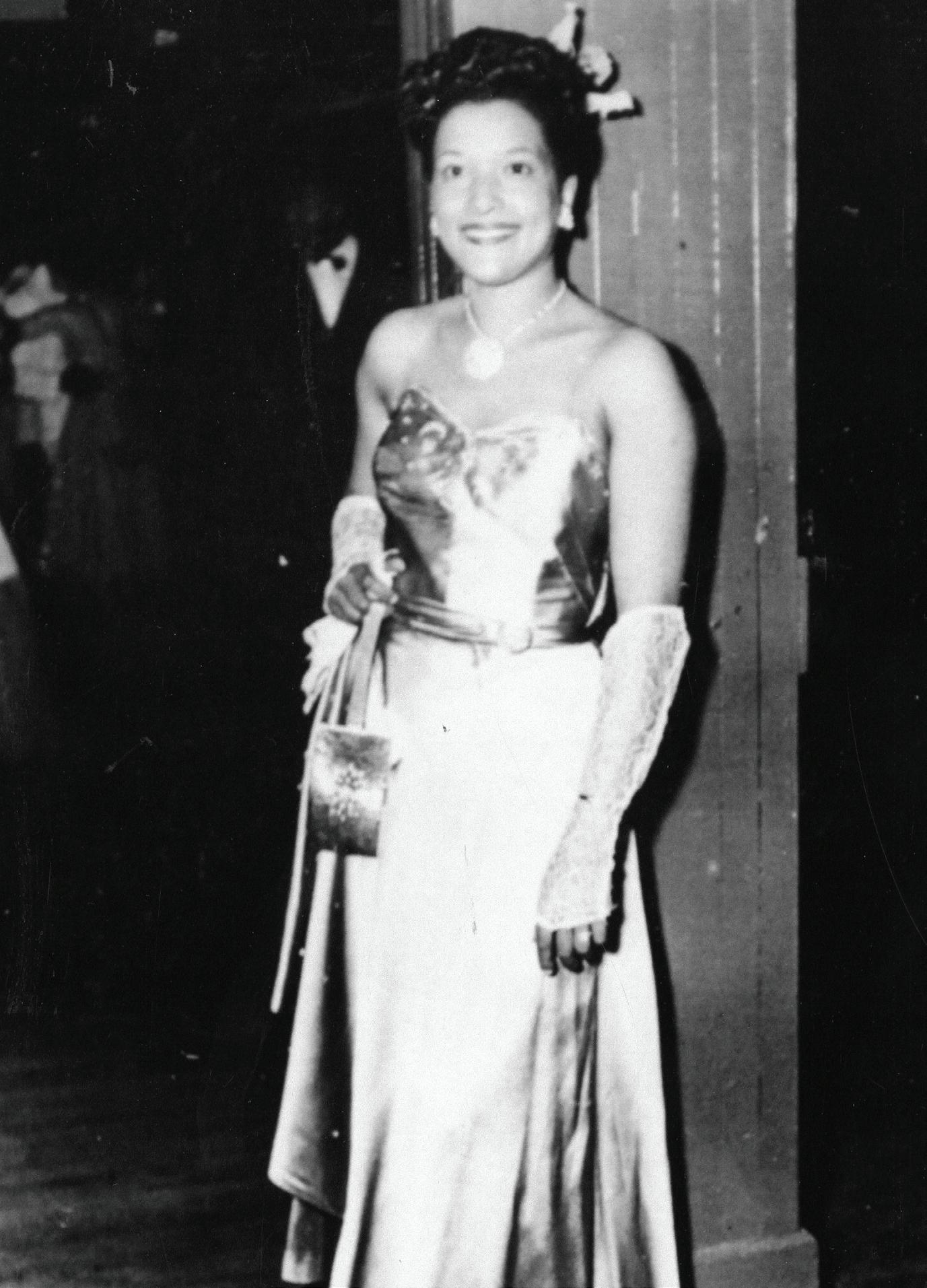
“For me, this is where my Weber State story begins,” Andrews said, “Weber State is a bold institution. We are quiet but mighty, and we stand up where we need to stand up.”
At one point, they bought a house in Riv-
erdale and it got tarred. Andrews said the community helped clean it up, with community leaders telling young boys to look out for the Gillespies’ children. When Bettye would retell this story, she would focus on the support they had received from their neighbors.
“That does not mean there was no racism, but at the same time, it says that there were people who said ‘we are all people, and we deserve to share respect and common humanity with each other,’” Andrews said.
Jim led Ogden NAACP until his health started to fail, during which Bettye took over for a period of time until she also stepped back to take care of her husband.
Willie MooreWillie Moore was the first African American to open a business on the north side of
25th Street, going against what previous segregation laws had imposed. Moore’s Barber Shop still runs on the corner of 25th and Lincoln Avenue.
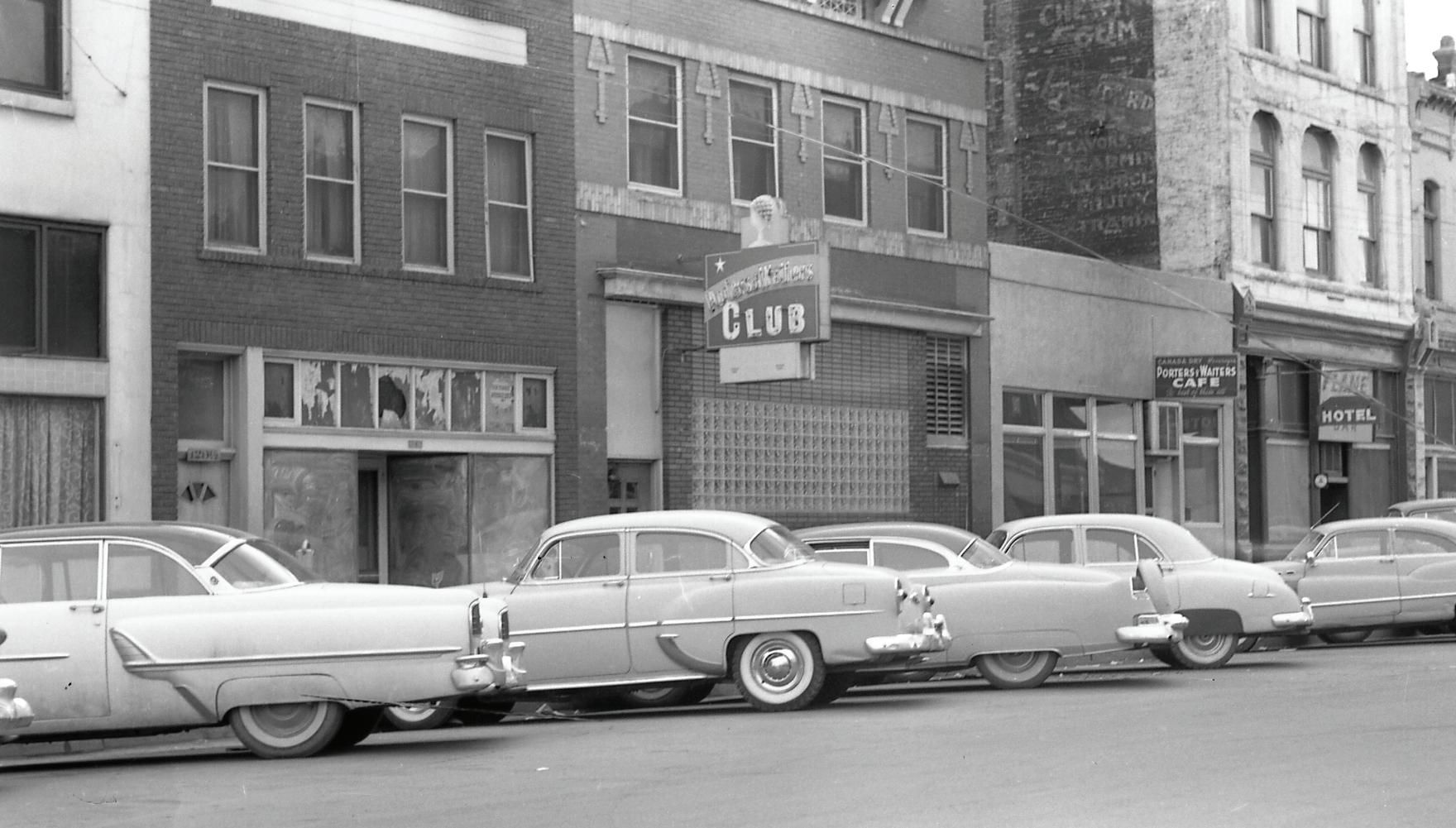
According to Langsdon, Moore was a Harlem Globe Trotter before becoming a barber, and he shelved his trophies inside the shop. Now owned by a former employee, Moore’s Barber Shop looks the same as it did when he ran it.
Each of these influential black figures paved the way for change in the Ogden community and were leaders in their own rights.
“I am always grateful for the opportunity to hear new stories from them or about them from other people, and it’s just such a rich tapestry to be a part of,” Andrews said, referencing this network of leaders. “I’m truly grateful.”
A photo of Anna Belle Weakley on a special occasion. Beverly Petty, Shauna Gillespie and Letha Johnson served as hostesses at Marshall White Center Open House, 1970.El 1 de febrero marca el comienzo del Mes de la Historia Negra, un momento para dar mayor énfasis a los logros y las luchas de los afroamericanos en la historia de Estados Unidos. La historia de Ogden está llena de muchas figuras negras influyentes, algunos de cuyos nombres los estudiantes podrían reconocer pero no conocer completamente. Cinco figuras seleccionadas muestran un gran liderazgo, defensa y perseverancia, y es importante dar a conocer sus historias.
Sarah Langsdon, jefa de colecciones especiales de la Universidad Estatal Weber, está trabajando en un proyecto llamado Blacks in Ogden (Negros en Ogden) y tenía mucha información que compartir sobre estas cinco figuras.
“Todos formamos parte de esta increíble historia que es Ogden, Utah”, dijo Adrienne Andrews, vicepresidenta de Equidad, Diversidad e Inclusión de la WSU. “Es nuestra historia”.
Joe McQueenLa calle 25 fue el hogar de uno de los músicos de jazz más célebres de Utah: el saxofonista Joe McQueen.
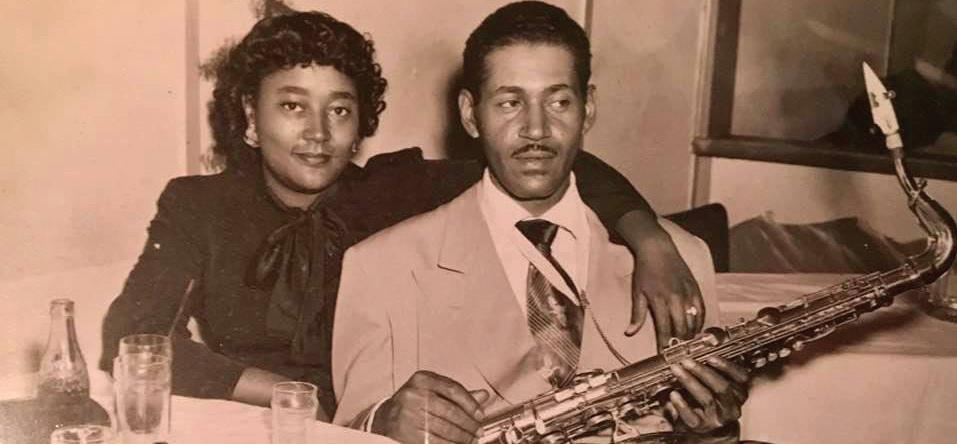
Donde ahora está la tienda local de música indie Lavender Vinyl estuvo el primer club no segregado de Ogden, Porters and Waiters. El nombre hacía referencia a los trabajadores negros del ferrocarril que servían la comida y llevaban el equipaje en Union Station. Al principio, Bill y Anna Belle Weakley lo regentaban como hotel, pero McQueen les sugirió que convirtieran el sótano en un club de jazz.
McQueen, sin embargo, tenía una pega: el club acogería a todo el mundo.
“Ogden estaba segregado, y la gente no
se da cuenta”, dijo Langsdon. Los negocios y operaciones de los negros sólo podían celebrarse en el lado sur de la calle, pero McQueen insistió en que todo el mundo pudiera disfrutar de su música.
Según Langsdon, muchos de los grandes del jazz, incluido Dizzy Gillespie, tocaban con McQueen cuando estaban en la ciudad, normalmente para cambiar de tren en la estación.
El edificio original del Porters and Waiters Club se quemó en 1969 a causa de un incendio en la cocina. McQueen siguió tocando música de jazz en Ogden y sus alrededores. Falleció en 2019 a la edad de 100 años.
Marshall White
Marshall White fue uno de los primeros policías afro-americanos de Ogden. El Centro Marshall White lleva su nombre y continúa celebrando su legado.
Según Langsdon, White fue médico militar durante la Segunda Guerra Mundial. Fue enviado a Ogden para tratar el creciente número de ETS que se producía entre los militares. Tras la guerra, White decidió quedarse en Ogden.
Podólogo de profesión, White no tardó en darse cuenta de que quería ser policía. El Departamento de Policía de Salt Lake se negó a contratarlo, pero en 1949 se convirtió oficialmente en agente del Departamento de Policía de Ogden.
Otro logro de White fue presidir la sección de Ogden de la Asociación Nacional para el Progreso de las Personas de Color. Parte de su misión era crear un espacio donde la comunidad pudiera reunirse, dijo Langsdon.
En 1963, White murió en combate a los 54 años. Tras su muerte, su familia abogó por la creación del Centro Marshall White, que abrió sus puertas en 1968.
POR MARIANNA LOPEZ-LURITTA Traductor Joe and Thelma McQueen sitting together.La ubicación del Marshall White Center está estrechamente relacionada con la segregación que tuvo lugar en Ogden.

“A los afroamericanos sólo se les permitía vivir de la 25 a la 30 y por debajo de Washington... por eso el Marshall White Center está justo en esa zona”, dijo Langsdon. “La razón por la que se construyó donde se construyó fue para que las familias con menos ingresos que tal vez no tuvieran un lugar seguro al que ir o la posibilidad de ir a algún sitio pudieran llegar a él”.
Uno de los hijos de White, Ron White, sigue defendiendo el centro, pidiendo reparaciones y argumentando contra los planes de derribarlo en favor de algo nuevo.
Jim y Bettye Gillespie
Tras la muerte de Marshall White, Jim Gillespie se convirtió en presidente de la NAACP de Ogden, donde permaneció más de 30 años. Él y su esposa Bettye fueron in-
fluyentes defensores de los afroamericanos de Ogden y de todo el estado.
Son los abuelos de Adrienne Andrews, que recuerda con cariño su implicación.
“A lo largo de la vida de estas dos personas se produjeron muchos momentos históricos”, dijo Andrews.
Bettye Gillespie defendió los derechos civiles desde muy joven. Andrews relató cómo una vez le dijeron a su abuela que no podía bañarse en una piscina pública cuando era niña. Intentó ir de todos modos y se sorprendió cuando no la dejaron entrar. En respuesta, la WSU le dijo que ella y sus amigos podían usar su piscina.
“Para mí, aquí es donde empieza mi historia en Weber State”, dijo Andrews, “Weber State es una institución audaz. Somos silenciosos pero poderosos, y damos la cara donde hay que darla”.
En un momento dado, compraron una casa en Riverdale y se llenó de brea. Andrews dijo que la comunidad ayudó a lim-
piarla, y que los líderes de la comunidad decían a los chicos jóvenes que tuvieran cuidado con los hijos de los Gillespies. Cuando Bettye volvía a contar esta historia, se centraba en el apoyo que habían recibido de sus vecinos.
“Eso no significa que no hubiera racismo, pero al mismo tiempo dice que había gente que decía ‘todos somos personas, y merecemos compartir el respeto y la humanidad común con los demás’”, dijo Andrews.
Jim dirigió la NAACP de Ogden hasta que su salud empezó a fallar, momento en el que Bettye tomó el relevo durante un tiempo hasta que también dio un paso atrás para cuidar de su marido.
Willie Moore
Willie Moore fue el primer afroamericano que abrió un negocio en el lado norte de la calle 25, yendo en contra de lo que habían impuesto las leyes de segregación anteri-
ores. Moore’s Barber Shop sigue funcionando en la esquina de la 25 con la avenida Lincoln.
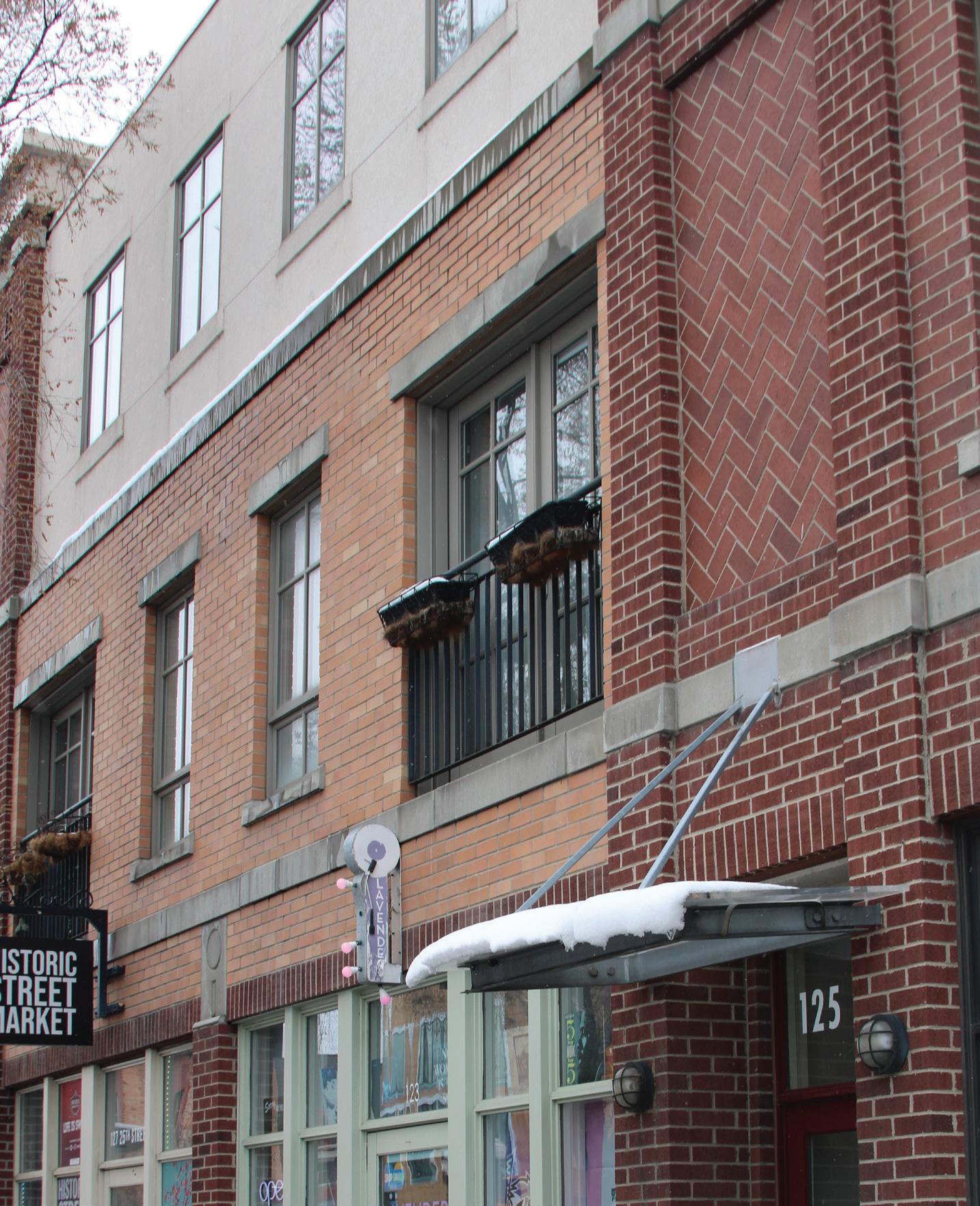
Según Langsdon, Moore fue un Harlem Globe Trotter antes de convertirse en barbero, y guardaba sus trofeos dentro de la tienda. Ahora, propiedad de un antiguo empleado, Moore’s Barber Shop tiene el mismo aspecto que cuando él la regentaba.
Cada una de estas influyentes figuras negras allanó el camino para el cambio en la comunidad de Ogden y fueron líderes por derecho propio.
“Siempre estoy agradecido por la oportunidad de escuchar nuevas historias de ellos o sobre ellos de otras personas, y es simplemente un tapiz tan rico del que formar parte”, dijo Andrews, refiriéndose a esta red de líderes. “Estoy verdaderamente agra-
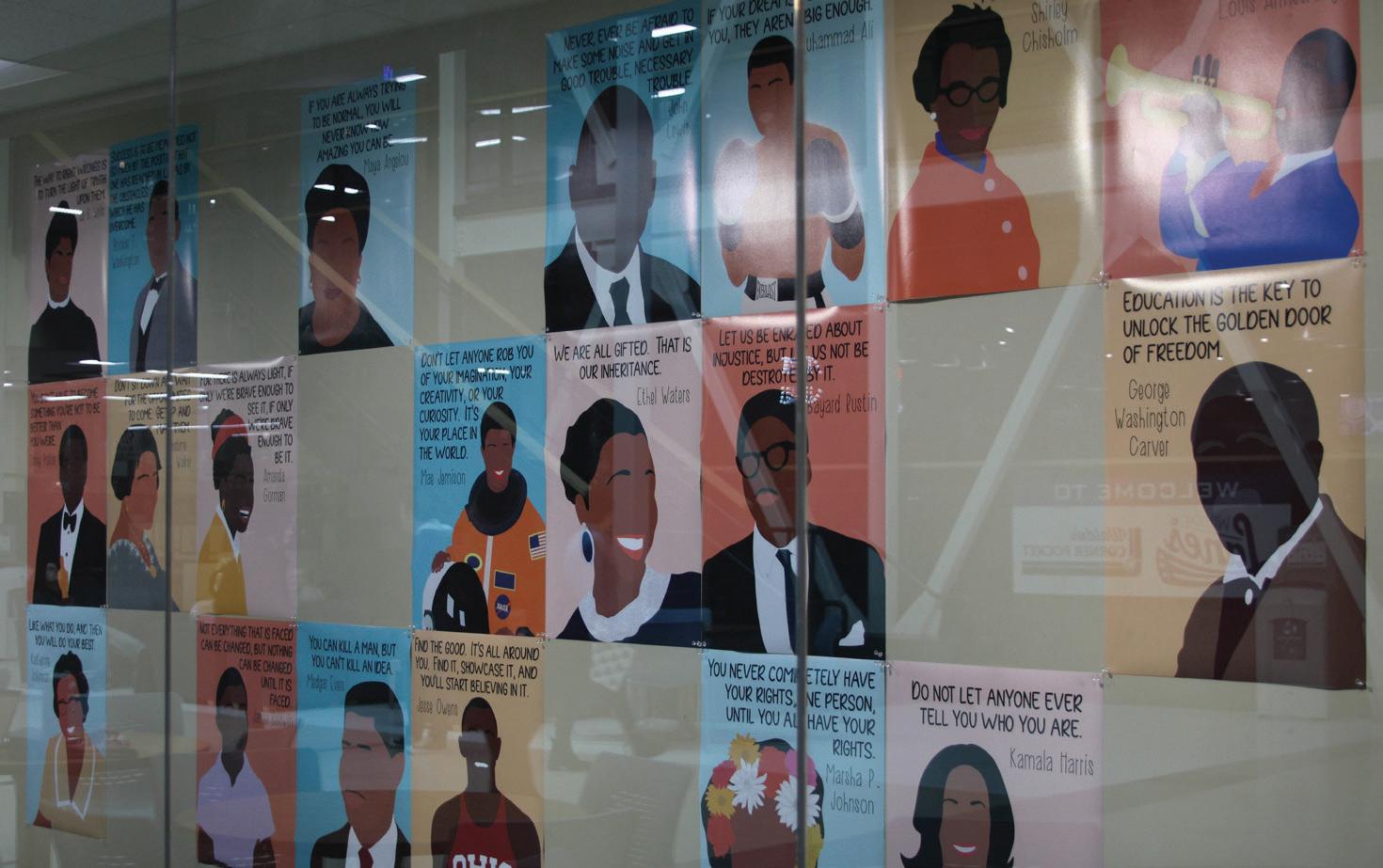
After disbanding in 2013, Weber State University’s kendo club has returned to campus. Kendo is a Japanese martial art that involves striking opponents with bamboo swords while wearing protective armor. The two styles of kendo are the traditional style, Koryu Kendo, and the modern style, Gendai Kendo.
Gendai Kendo is the more widely practiced style of kendo. Originating during the Meiji era between 1868-1912, it focuses on the sport rather than the actual combat with a samurai sword. On the other hand, the Koryu style emphasizes technique and strategy.
David Diguangco, a first-degree black belt, is the instructor for the Weber State Kendo club. The style, itto-ryu, was founded by Itto Itosai and is the form of kendo that is taught by Diguangco.
“The school is a very modern style in a sense of the study of the samurai sword and the samurai family,” Diguangco said.

Weber State’s first kendo club started in 1991. After all the members graduated in 2013, the club disbanded.
“Kendo is a lot of work, and it’s not easy to learn,” Diguangco said. “As in life, you get out what you put in.
The practice portion of the kendo club’s
meetings have two parts. The first part is iaido, or the practice with bamboo swords called shinais. This portion of the practice emphasizes the cutting techniques called kata. The second section of the practice is kendo, which is the actual combat in the kendo armor. This portion of the practice uses various techniques that are displayed in the kata.
In kendo, a point is scored by striking the opponent with the bamboo sword on specific target areas: the head, wrist or torso. A valid strike must be made with sufficient force, control and with the correct part of the shinai. In a standard kendo match, the first person to score 2 points wins the bout.
The traditional uniform for kendo is called the gi with an additional pair of coveralls called the hakama. A metal cage protects the face and the do, or breastplate, covers the chest and stomach. The tare protects the hips and upper thighs and the gloves, called kote, complete the kendo armor.
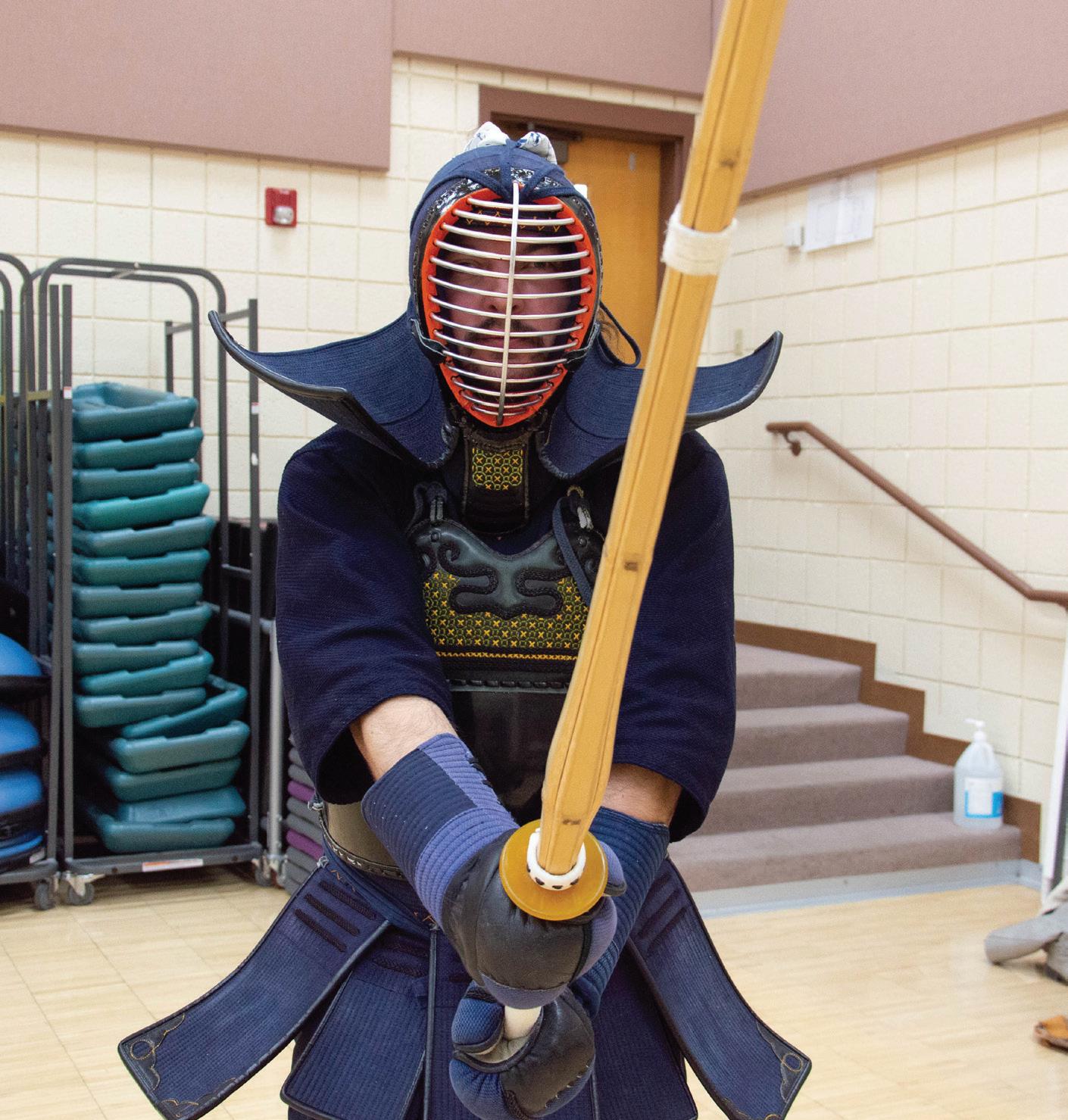
“Kendo has taught me a lot about discipline, and wanting to strive for improvement, perseverance and patience is a major factor while practicing kendo,” kendo club member Kolby Doxy said.
The Weber State kendo club meets at the Swenson Gym 119 at 6 p.m. on Thursdays.

Share this story at thesignpostwsu.com







Después de disolverse en 2013, el club de Kendo de Weber State ha retornado al campus. Kendo es un arte marcial que implica golpear a los oponentes con espadas de bambú mientras que se lleva armadura protectora. Los dos estilos de Kendo son lo tradicional, Koryu Kendo, y lo moderno, Gendai Kendo.


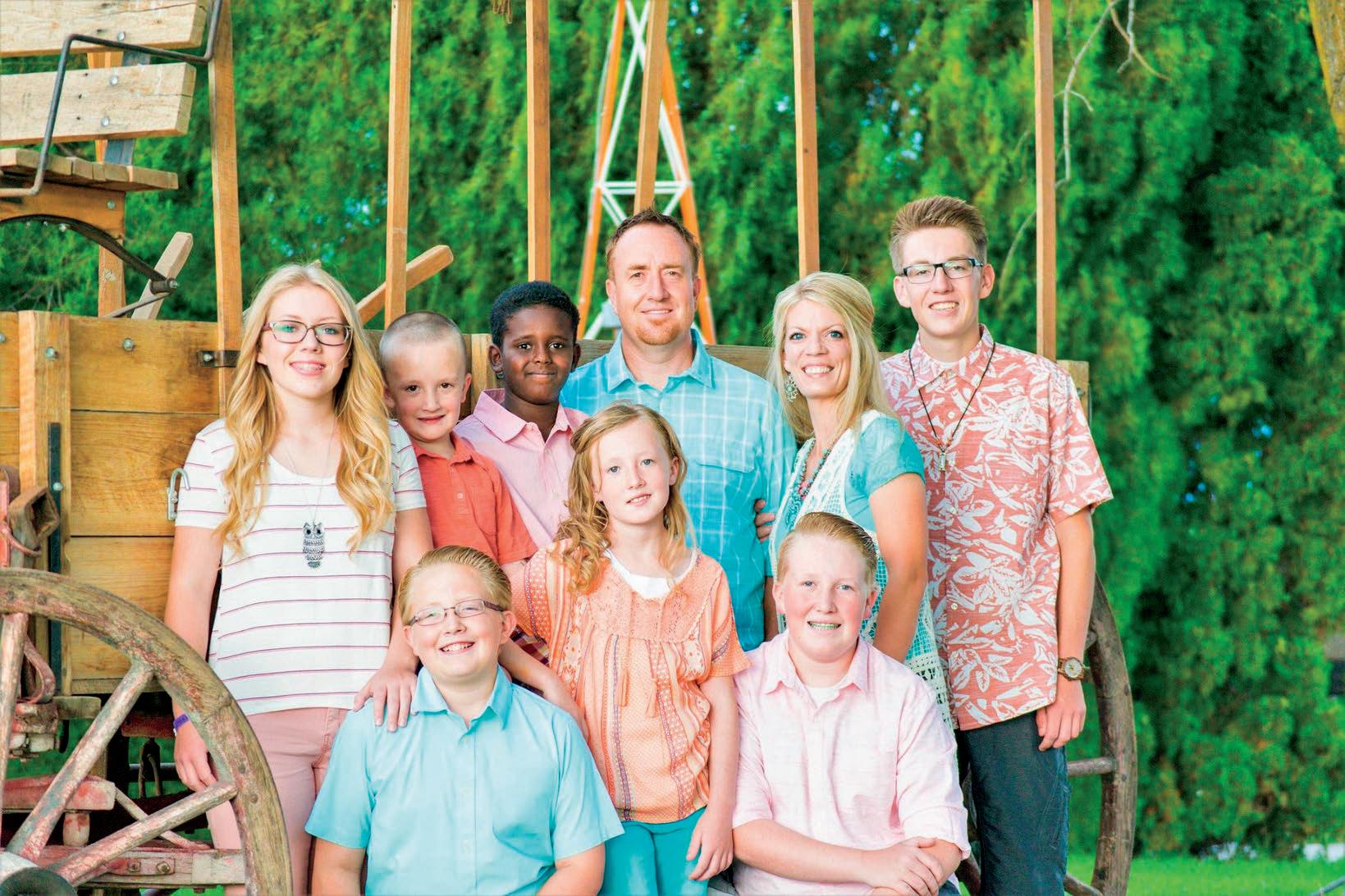


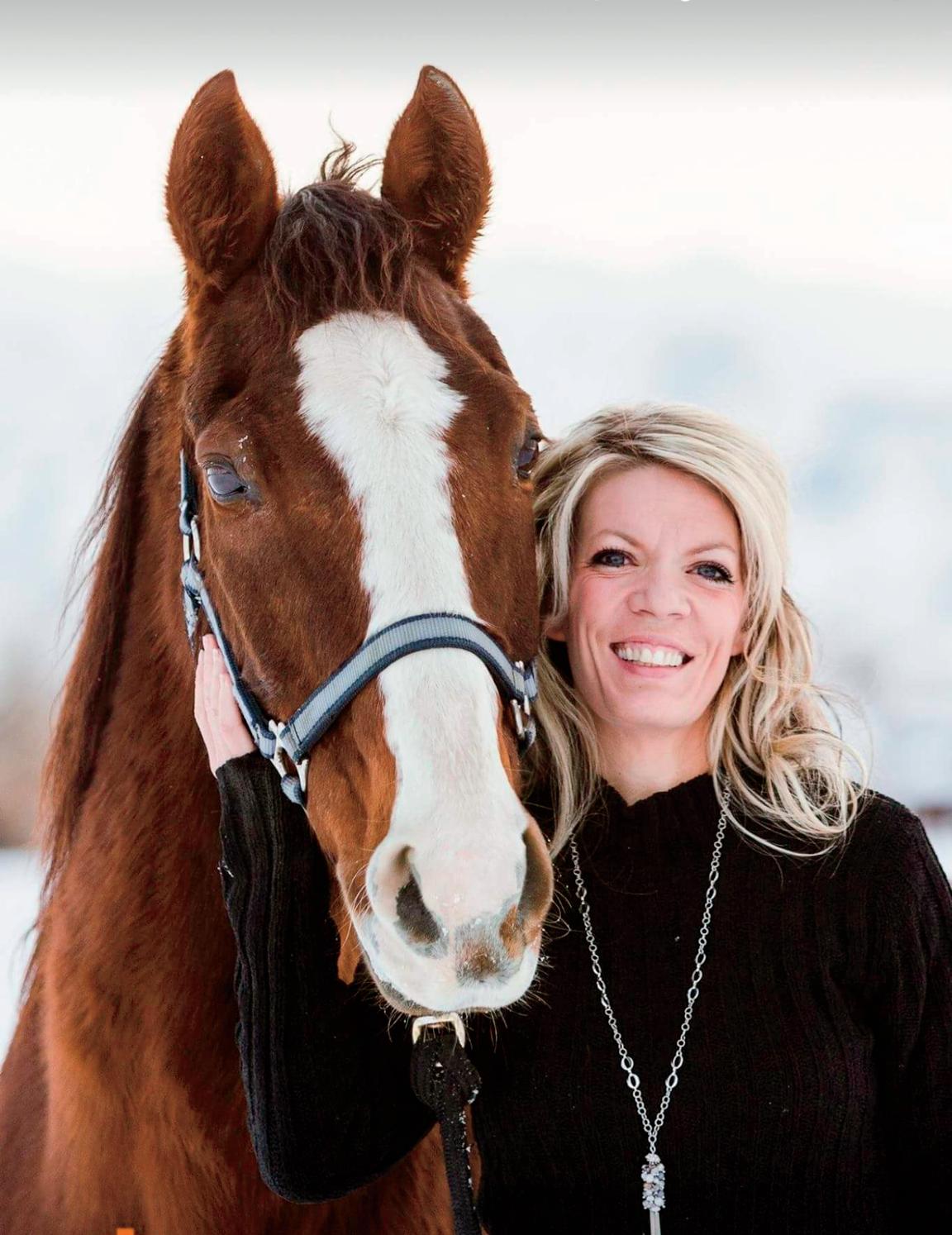
Gendai Kendo es el estilo que es practicado más comúnmente. Originalmente de la era Meiji entre 1868 y 1912, enfoque en el deporte más que en el combate con una es-
pada samurai. Por otra parte, el estilo Koryu destaca la técnica y estrategia.
David Diguangco, un “cinturón negro” del grado primero, es instructor para el club de Kendo de Weber State. El estilo, itto-ryu, fue fundado por Itto Itosai y es la forma de Kendo que es enseñado por Diguangco.
“La escuela es un estilo muy moderno en el sentido del estudio de la espada samurai y la familia samurai,” dijo Diguangco.

El primer club de Kendo de Weber State empezó en 1991. Después de graduarse todos los miembros en 2013, el club se disolvió.
“Hacer Kendo es mucho trabajo, y nos es fácil de aprender,” dijo Diguangco. “Como la vida, se recibe lo que se pone.”

La porción de práctica de las reuniones del

club de Kendo tiene dos partes. El primero es iaido, o sea, la práctica con espadas de bambú llamadas shinais. Esta porción de la práctica destaca la técnica de cortar llamada kata. La segunda parte de la práctica es Kendo, el cual es el combate actual en la armadura Kendo. Esta parte de la práctica usa varias técnicas que se muestran en la kata.
En Kendo, se gana un punto por golpear al oponente con la espada de bambú en áreas específicas del cuerpo: la cabeza, la muñeca o el torso. Un golpe válido tiene que efectuarse con suficiente fuerza, control y usando la parte del shinai correcto. En un partido normal de Kendo, la primera persona que gana dos puntos gana el partido.
El uniforme tradicional para Kendo se llama el gi y tiene un buzo llamado el hakama.
Una jaula protege la cara y el do, una coraza, cubre el pecho y el estómago. El tare protege las caderas y los muslos superiores y los guantes, llamados kote, completan la armadura Kendo.
“Kendo me ha enseñado mucho sobre la disciplina, y querer esforzarse para el mejoramiento, la perseverancia y la paciencia es un factor mayor cuando se practica el Kendo,” dijo Kolby Doxy, un miembro del club de Kendo.

El club de Kendo de Weber State se reúne en el salón 199 del gimnasio Swenson los jueves a las seis de la tarde.


After beating a Big Sky Conference opponent for the first time this season, Weber State University’s women’s basketball team lost 57–41 against Idaho State University on Feb. 4 at the Dee Events Center.

Forward Jadyn Matthews scored early for the Wildcats in the first quarter by hitting a 2-point jump shot. Bengal forward Laura Bello responded by making a layup.
In a defensive battle, both teams combined for 18 turnovers in the quarter, with Weber State having 10 and Idaho State having 8. At the end of the first quarter, the Bengals had a 9–4 lead.
Heading into the second quarter, both offenses had an easier time getting the ball in. Shooting 50% from the field, Idaho State’s efficiency helped them edge out the Wildcats, who were only shooting 40%.
Early in the quarter, Idaho State went on a 13–3 run resulting in a double-digit lead. Outscoring the Wildcats by 8 points in the second quarter, the Bengals led 29–16 going into halftime. Both teams combined for a total of 31 turnovers in the first half.
Coming into the third quarter, both teams were able to limit their turnovers. The Bengals outscored the Wildcats by 4 points, shooting 38% to Weber State’s 21%.
The fourth quarter was the only one in which Weber State outscored Idaho State,
putting up 15 points to the Bengal’s 14. The Wildcats scored most of their points in the paint and on the free-throw line.
Overall, Weber State shot 31% from the field with 24 turnovers for the entire game, Their only lead of the game was their 2–0 start with Matthew’s jumper.
Forward Daryn Hickok ended the game with 9 points, Matthews with 8 and forward Laura Taylor with 7.
The Bengals shot 39.7% for the game, with their largest lead hitting 21 points. Idaho had 15 points off of Weber State’s turnovers and 14 offensive rebounds.
Bello ended the night with a 16-point, 10-rebound double-double. Guard Callie Bourne was also able to put up double-digit figures with 12 points.
Both teams had an equal number of possessions with 68; t. This game came down to efficiency on the offensive end of the floor.
Weber State declined to comment on the game
when asked for an interview. The Wildcats are currently 5–18 on the year and 1–9 in the Big Sky conference.
Weber State faced the University of Northern Colorado on Feb. 6, ending their homestand. They will hit the road to face Montana State University on Feb. 9 at the Brick Breeden Fieldhouse.

The answer is C, 7.8. According to CNN, the earthquake that devastated much of the population of both Turkey and Syria this past weekend was of 7.8 magnitude on the Richter scale. Buildings were toppled, and more than 2,300 people lost their lives in this disaster. Many international organizations are lending their hands to help the people of this respective country.
Editor-in-Chief
Breanna Hart breannahart@mail.weber.edu

Managing Editor Alexandrea Bonilla alexandreabonilla@mail.weber.edu
Design & Graphics Editor Star Neil starneil@mail.weber.edu
Asst. Design & Graphics Editor




Emilie Hart emiliehart@mail.weber.edu
Photo Editor Kennedy Camarena kennedycamarena@mail.weber.edu
The answer is B, 32. According to The New York Times, with her win for Best R&B song for “Cuff It,” Beyoncé took home 32 Grammy Award trophies since her first win in 1998. She has garnered a record breaking 88 nominations since then.
The answer is C, China. According to CNN, the alleged spy balloon was spotted over Latin America skies. Chinese officials said it was a balloon used for weather-surveying purposes. China called the move from the U.S. to shoot down the balloon as “an overreaction” and “seriously violating international practice.”
The answer is A, Tom Brady. According to ESPN, Brady has won seven Super Bowls across his career. Although he has officially announced his retirement this past week, he announced it this time last year and recanted his retirement. Brady recently signed a historic $540 million post-retirement TV deal to be a lead NFL on-air analyst for Fox Sports, though that won’t start airing until he’s finished playing.
Asst. Photo Editor Anna Kuglar briannakuglar@mail.weber.edu


Chief Copy Editor Justin Steed justinsteed@mail.weber.edu
News Editor Lucas Moore lucasmoore@mail.weber.edu
News Editor Tim Costello timcostello@mail.weber.edu
Sports Editor Simon Mortensen simonmortensen@mail.weber.edu
Asst. Sports Editor Rayshaun Baker-Lynch rbakerlynch@mail.weber.edu
Culture Editor Adam Montgomery adammontgomery1@mail.weber.edu
Culture Editor Lexie Andrew lexieandrew@mail.weber.edu
The Signpost is a student publication, written, edited and drafted by Weber State University students. Student fees fund the printing of this publication. Opinions or positions voiced are not necessarily endorsed by the university. The Signpost reserves the right to edit for reasons of space and libel and to refuse to print any letters. Letters should be submitted online to thesignpost@weber. edu and read letter to the Editor in the subject box. Letters should not exceed 350 words.
Translation Editor Marianna Lopez-Luritta mlopezluritta@mail.weber.edu Advisor Jean Norman jeannorman@weber.edu



Business Manager Rob Steedley robertsteedley@weber.edu
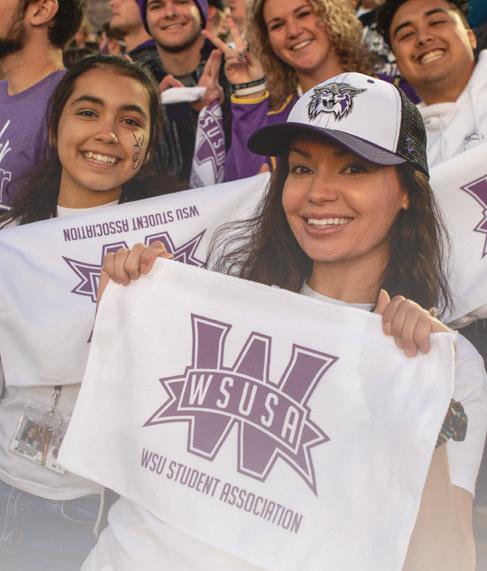
Interested in the student fee process?





will be holding open deliberations
Feb. 3 at 12:30 p.m. in the Shepherd Union, Room 404A, and Feb. 10 at 12:30 p.m. in the Stewart Library, HetzelHoellein Room 321, to decide where your student fees will go beginning in the 2023-2024 school year.


Feb. 27- March 1 , 2023







More information and for Zoom links:
weber.edu/StudentAffairs/sfrc.html
